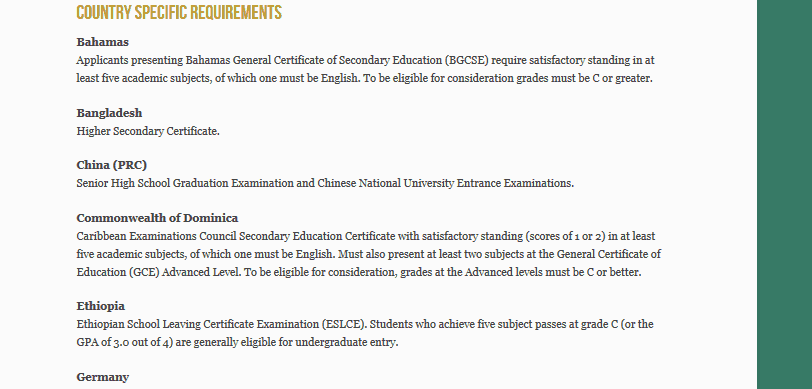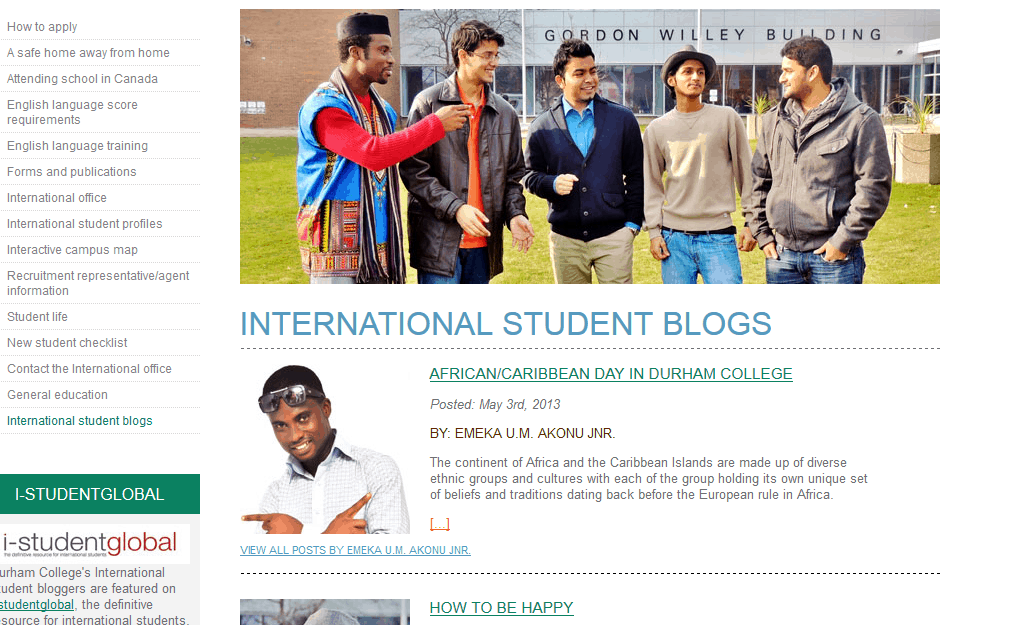International student recruitment is becoming increasingly important to many higher education institutions as it typically represents a higher tuition revenue source while also expanding campus diversity with top talent. Although there has been an exponential growth of undergraduates studying abroad since the turn of the century, global competition for international students has intensified in recent years. Canada has long lagged behind the U.S., U.K. and Australia in this department but proudly announced that over 100,000 international students were welcomed in 2012, an increase of 60% from 2004.
Canadian colleges and universities have benefited from a greater governmental emphasis on attracting foreign students, who contribute over $8 billion annually to the national economy. The local focus on applied higher education and high placement rates are key selling points to prospective students, who are also no doubt swayed by increasingly immigrant-friendly student visa policies and the significantly lower tuition costs compared to our southern neighbor.
International recruitment presents more challenges than domestic student marketing and requires a committed engagement by all institutional stakeholders. Admissions strategies have historically used a “funnel” approach, seeking to attract the highest number of applicants from a broad range, even if the yield from the applicant pool is small. In the face of limited recruiting resources, more colleges are focusing on targeted efforts, which consider what type of international student they are likely to attract based on academic reputation, program offerings, and overall culture and environment. This requires accurately assessing your own college’s strengths while understanding the factors that motivate prospective students.
Most institutions rely on traditional source countries to concentrate their efforts as nearly one in two U.S. international students come from China, India or South Korea. There is a growing awareness that expanding growth in emerging markets such as Saudi Arabia, Brazil, Vietnam and Turkey, represents untapped potential. Understanding your target region means analyzing costs and benefits of investment, and ideally tailoring your website to the local market. To accomplish this in China would likely require recruiting Chinese partners to assist domain setup, monitor feedback and seed local social media channels, such as Weibo. Be aware that foreign students are more likely to type “top Canadian university” into their local search engine than seek out a particular location or establishment, and that parents and word-of-mouth via social media will have a greater impact on the decision-making process.
Factor Chosen First When Undertaking Study Overseas
 Source: JWT Education, Quantitative Survey Among International Students, Foreign Affairs and International Trade Canada, 2007.
Source: JWT Education, Quantitative Survey Among International Students, Foreign Affairs and International Trade Canada, 2007.
No matter how a prospective student learns about your institution, they are guaranteed to end up at your official English-language website, so that first impression is priceless. Since most international students are unable to visit campuses abroad prior to applying and enrolling, your website is likely to be the most important factor in shaping a prospect’s entire image of your university or program. Pay particular attention to content and usability, realizing that international students have different interests, expectations and informational needs than their domestic peers.
1. Define your commitment
The first step to effective international recruitment is making a strong institutional commitment and engagement, and setting realistic goals. The University of Alberta identified internationalization as a key priority in 2006, articulating a goal of increasing enrollment to 15% of their undergraduate student body by 2015, as part of their comprehensive strategy. They established an International Office, with a director, assistant director and six recruiters. Creating a focus group of current international students and alumni is an excellent resource to determine what works and what doesn’t on your present website. This can reveal how foreign students first learned about your school, whether they worked with a counselor or agent, and what would have helped them better navigate the process.
Example: The University of Alberta answers many key questions an international student might have regarding life in Canada, with content-rich cultural and university-specific information. There is an impressive virtual tour in English and Mandarin, and selecting your home country on a world map allows you to access particular translated material. A downloadable brochure makes it easy to convey information to the all-important decision-making parents. Also keep in mind video alternatives to YouTube, as the video sharing giant isn’t accessible in China.
Focus on promoting your most highly rated programs, emphasizing positive world rankings, and adjusting your messages to be easily understandable to students who have grown up with different education systems and are unfamiliar with local geography and culture.
2. Exclusive international student landing page
Students usually come to a website seeking specific information so establishing a landing page for a targeted audience, limiting content to essentials, ensures that future international students can easily find what they’re looking for in a quick five second scan. Critical elements can include:
- A search feature for available undergraduate and graduate programs
- Admissions criteria
- Upcoming international recruitment visits
- Financial and visa requirements
- Clear calls to action buttons
Example: Fredricton, New Brunswick’s St. Thomas University offers an engaging international recruitment microsite with useful information, such as English-language and country-specific admission requirements. Helpful admissions information may include reporting methods, score requirements, deadlines, mailing addresses, recommendation-letter guidelines and application fee payment methods.
3. Connect visitors with other international students
Profiles of past and current international students effectively showcases the various countries represented at your university. Identify international alumni who can act as counselors for prospective students in their home country and current student leaders willing to serve as resources in a “Contact a Current Student” website feature. Providing connections for an online peer-to-peer mentorship service will be invaluable to new recruits. Blogs and testimonials, enhanced by pictures and videos, are a great way of making the cultural transition easier.
Example: Durham College features colorful blogs from current international students under topics such as “How to dress for winter” and “What it’s like to study in Canada.”
Example: Fanshawe College provides large translate buttons with easy-to-read testimonials from various countries.
4. Measure and modify
A successful international website is an ongoing process of experimenting, measuring and adjusting. By beginning with clear, measurable goals and applying Google Analytics to determine how successful your key performance indicators (KPI’s) are implemented, you can cost-effectively optimize your website for international student recruitment.
Which website features have worked best for your international student recruitment?










